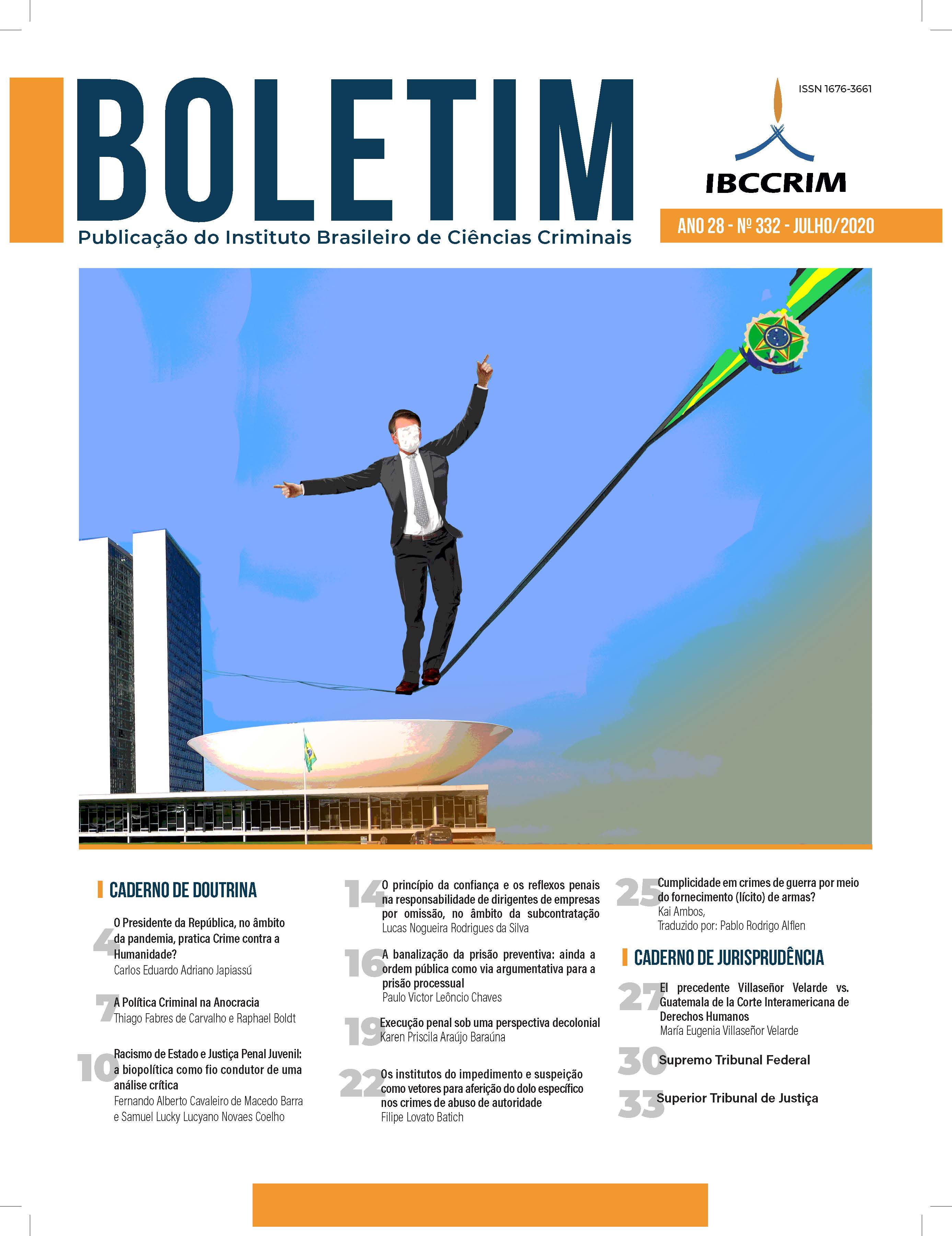Criminal Policy in Anocracy
Views: 178Keywords:
Criminal Policy, Anocracy, DemocracyAbstract
Autocracy and democracy are mixed in the political regimes called anocracy, are diluted in a polymorphic substance, consciously inducing citizens to unconsciousness, concealing the hypnosis of passive acceptance of authoritarian practices. The text provides a brief overview of these partial or hybrid democracies that reveal a political scenario in which economic and political elites provide the necessary resources for the preservation of power and for the increase in the militarization of social control. Thus, the preservation of the most elementary rights remains unviable, as entire territories live under total criminal control and without any legal limit.
Downloads
Publication Facts
Reviewer profiles N/A
Author statements
- Academic society
- Instituto Brasileiro de Ciências Criminais
- Publisher
- IBCCRIM
References
CASARA, Rubens. Estado Pós-Democrático: neo-obscurantismo e gestão dos indesejáveis. Rio de Janeiro: Civilização Brasileira, 2018,p. 23.
COLOMER, Josep M.; BANERJEA, David; MELLO, FernandoB. de. To Democracy Through Anocracy. Democracy & Society, Georgetown, v. 13, n. 1, p. 19-25,2016.
GÜNTHER, Klaus. Warum Transitional Justice auf die Feststellung strafrechtlicher Schuld angewiesen ist – Zwölf Thesen. In: NEUMANN, Ulfrid;PRITTWITZ, Cornelius; ABRÃO, Paulo et al. (Hrsg.), Transitional Justice. Das Problem strafrechtlicher Vergangenheits bewältigung, Frankfurt am Main (Frankfurter Kriminalwissenschaftliche Studien 143, Peter Lang-Verlag) 2013. p. 271-285.
HEGEL, Georg W. F. Filosofia da história. Trad. Maria Rodrigues & Hans Harden. Brasília: UNB, 1995,p. 53.
MARSHALL, Monty; COLE, Benjamin. Global Report on Conflict, Governance and State Fragility 2008. Foreign Policy Bulletin, Cambridge, v. 18, n. 1, p. 3-21, jan./2008.
ORWELL, Georg. 1984. São Paulo: Companhia Editora Nacional, 1998,p. 200 e 36.
SACCOMANI, Edda. Fascismo. In: BOBBIO; Norberto; MATTEUCCI, Nicola; PASQUINO, Gianfranco (orgs.). Dicionário de Política. Brasília: UnB, 2000,p. 466.
Downloads
Published
How to Cite
Issue
Section
License
Copyright of published articles belongs to the author, but with journal rights over the first publication and respecting the one-year exclusivity period. Authors may only use the same results in other publications by clearly indicating this journal as the medium of the original publication. If there is no such indication, it will be considered a situation of self-plagiarism.
Therefore, the reproduction, total or partial, of the articles published here is subject to the express mention of the origin of its publication in this journal, citing the volume and number of this publication. For legal purposes, the source of the original publication must be consigned, in addition to the DOI link for cross-reference (if any).


 Português (Brasil)
Português (Brasil)
 English
English
 Español (España)
Español (España)






